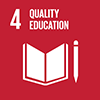Description/achievement of initiative
FIT has already completed many sustainable projects on campus. Each year a sustainability conference is held on campus and FIT reports to the college community the projects that have been completed, as well as those that are planned or in progress.Partners dedicated to achieving these targets are and have been the New York Power Authority, Clean Air New York, New York City Department of Buildings, Mayor's Office of Long-Term Planning and Sustainability, Department of City Administrative Services, New York City Office of Energy and Conservation and New York Power Authority Peak Load Management Program.
Implementation methodologies
The Fashion Institute of Technology (FIT) has been committed to and continues to engage in sustainability projects. FIT has already completed many sustainable projects on campus. Each year a sustainability conference is held on campus and FIT reports to the college community the projects that have been completed, as well as those that are planned or in progress.In 2012 through 2013, FIT will continue energy curtailment programs with our utility providers. In summer of 2012, we will proceed with the HVAC refurbishment and replacement in our Co-Ed dormitory. This building is 15 stories, 90,000 GSF with 233 Units. FIT's goal is to reduce the carbon emission from the building. The existing equipment uses steam as the source of energy. It is estimated that approximately $10,000 a month will be saved with this conversion. The reduction in the building's carbon footprint will be significant, as steam generates considerable soot in an urban center like New York City. This was modeled to achieve a 650 ton carbon emission reduction.The installation of new dormitory occupancy sensors (2012-2013) in one of our residence halls will reduce energy costs in addition to the installation to new energy efficient lighting.FIT is committed to painting additional cool roof surfaces within the next year. Solar reflectivity expresses the degree to which a roof reflects the visible, infrared and ultraviolet rays that comprise solar energy. Surfaces with high solar reflectivity reflect more infrared and ultraviolet rays. A cool roof reduces the amount of energy absorbed by the roof which helps lower a buildings' temperature and cuts energy costs.
Arrangements for Capacity-Building and Technology Transfer
Coordination mechanisms/governance structure
Partner(s)
Fashion Institute of Technology, State University of New York.


 2015
2015
 2015
2015
 2015
2015
 Time-frame: 2012 - 2015
Time-frame: 2012 - 2015